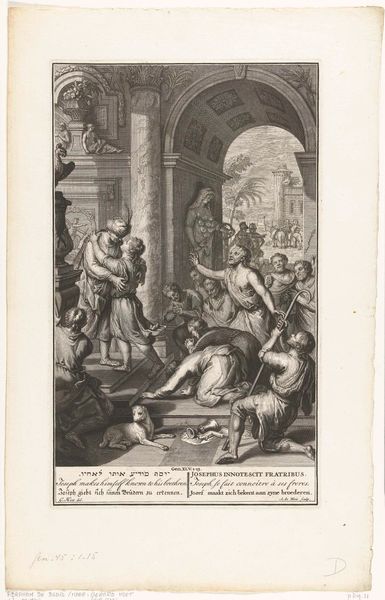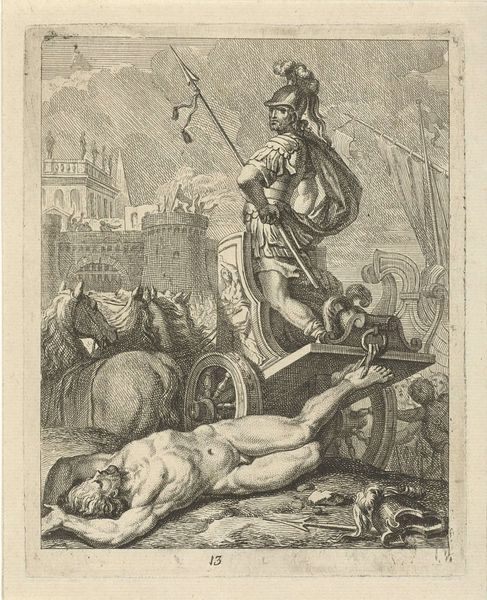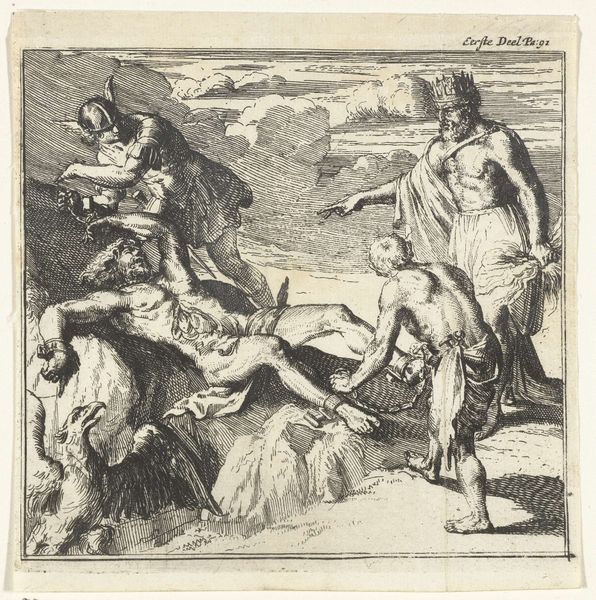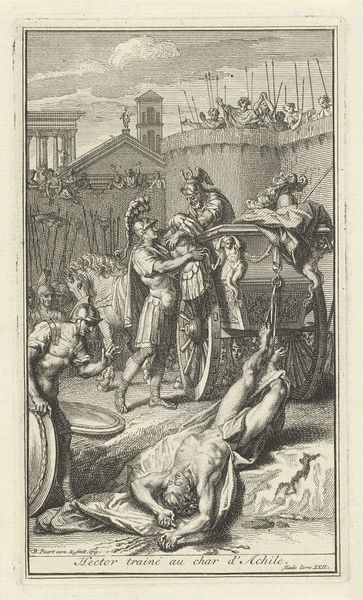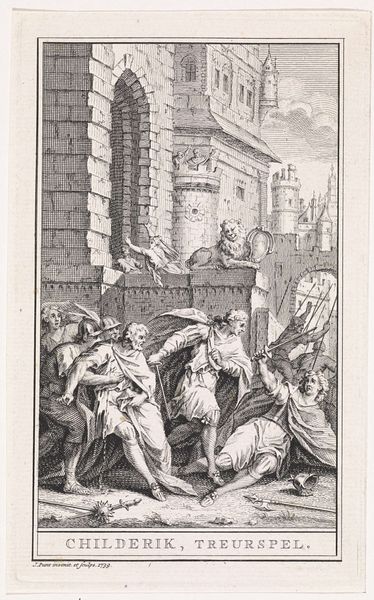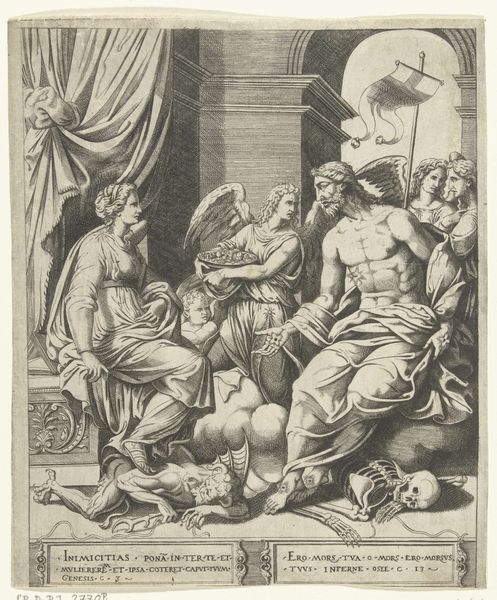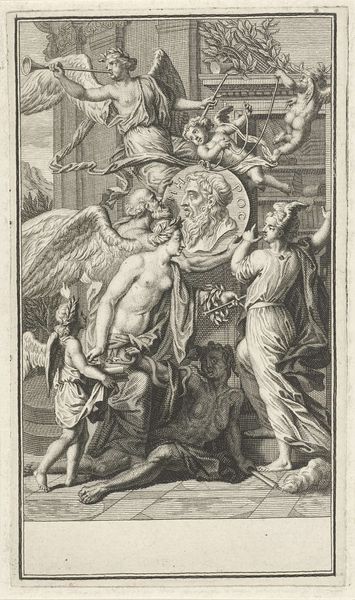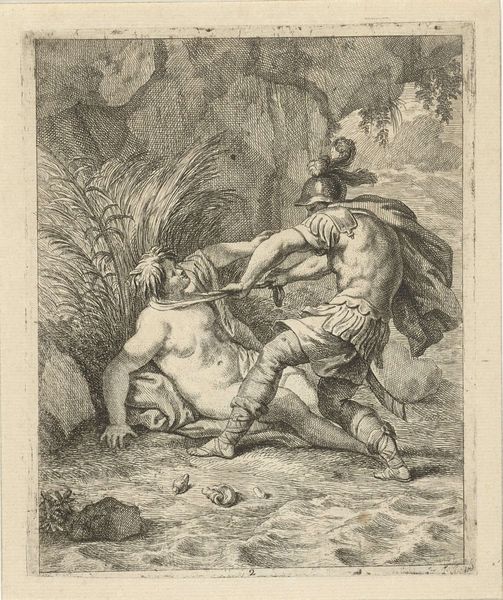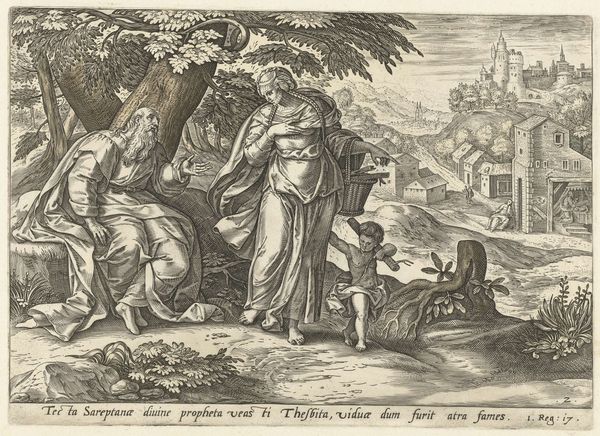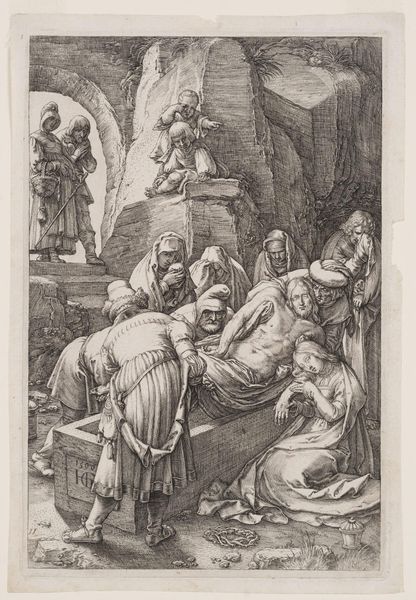
print, engraving
#
neoclacissism
#
narrative-art
# print
#
figuration
#
line
#
history-painting
#
engraving
Dimensions: height 140 mm, width 88 mm
Copyright: Rijks Museum: Open Domain
Curator: Looking at this engraving by Reinier Vinkeles from 1770, it strikes me how deeply rooted in Neoclassical ideals it is, especially for a title page intended for Racine’s "Phaedra". Editor: It’s melodramatic, isn’t it? So much grief etched into every single line! The figures look like they’ve just stepped out of a stage play, all poses and pronouncements, set against this surprisingly serene backdrop. Curator: Indeed! Vinkeles, in depicting this tragic scene, deliberately draws on the visual language of classical antiquity—a very common practice at the time as Neoclassicism took hold in the late 18th century. Editor: You can practically hear the trumpets blaring! It's interesting to think of this piece, a print no less, meant to set the tone for a play, considering the emotional weight it’s intended to convey, wouldn't you say? The body language, the sky, the almost cartoonish grief! Is that the 'line' style you historians are so interested in? Curator: Very insightful observation. Engravings, because of their reproducibility, were perfect tools to disseminate such imagery, and Vinkeles mastered this art. It's fascinating to look into his take on Racine's famous, ill-fated characters through a Neoclassical lens. The intention would have been to allude to and almost literally illustrate "history painting." Editor: Well, consider my heartstrings tugged! There’s something strangely comforting about seeing such raw emotion rendered with such...precision. You almost can’t believe it can all be just from lines of varying sizes and spacing in the printmaking style—to know you can express something raw but also restrained. It is indeed a balancing act, and speaks to a world of contradictions doesn’t it? Curator: Precisely. The cultural fascination with classical themes gave artists and audiences alike a shared vocabulary. Think about the symbolic landscape around it too: those architectural details in the background and even the distant mountain range that help anchor the narrative in both time and space. Editor: Now that you mention it, that's fascinating. It feels almost dreamlike to combine a world of such tragedy alongside beautiful features of our earth that endure past any amount of despair...almost cathartic, no? Curator: I suppose that's one way of seeing it; I, for one, think the power and success of it had a lot to do with how prints function in society and politics during the time. Editor: Ah, always bringing it back to history! Alright then, a masterful, poignant and political print that bridges tragedy, beauty and the lines on paper. That's what I'll call it from now on!
Comments
No comments
Be the first to comment and join the conversation on the ultimate creative platform.
